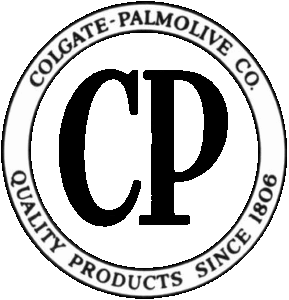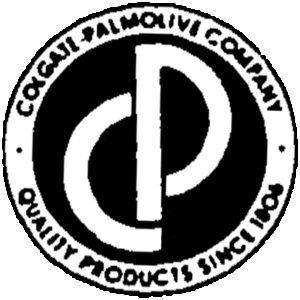
Colgate-Palmolive is a world-renowned FMCG brand that offers a wide range of consumer goods in the realm of oral care, personal care, pet nutrition, and home care. The Colgate part of the company was founded in 1806 as a soap and candle manufacturer, while the Palmolive part of the company was founded in 1917. The two came together in 1953 and collectively own more than fifty brands.
The Colgate-Palmolive logo is one of the most recognisable symbols in the global consumer goods industry. It reflects over two centuries of brand heritage, innovation, and adaptation. The evolution of the Colgate-Palmolive logo shows the journey of the US-based multinational company from a small New York soap and candle business to a worldwide leader in oral care and personal products. The article delves into the evolution of the Colgate-Palmolive logo over the years.
The Genesis of the Colgate-Palmolive Logo (1953 – 1976)
The original logo of the Colgate-Palmolive company features a large-sized monogram “CP” at the centre to represent the initials of the company. It was enclosed within a double-lined circle that showed the full name of the company in capitals in the upper part. The lower part showed “Quality Products Since 1806” in uppercase in the lower part. The logo was designed in monochrome to suggest timelessness. The contrast of black against a white background stood for clarity and integrity.

(1976 – 1983)
The logo iteration of 1976 retained the “CP” monogram but with a twist. The letters “C” and “P” looked overlapped and more geometric in white against a black background. Like earlier, the double-lined circle contained the full name of the company in the upper part and the rest in the lower part in black, bold capitals.

(1983 – 1993)
The 1983 logo was a departure from the past, as the encompassing double-lined circle was removed. The “CP” monogram was redesigned to look sleek and minimalistic. The letters “C” and “P” in vibrant look to have formed a broken ellipse separated by a thin white gap, which resembles a “+” sign. This symbolises positive changes, prosperity, and innovation.
Designed by Lou Luscher for Wallace-Church Associates, the logotype to the right of the monogram showed the full name of the company in uppercase. Written using a modified Eras typeface, the “COLGATE-PALMOLIVE” part in italics was mentioned in bold to highlight the brand. Incidentally, the word “COMPANY” was mentioned in the form of a blurred sketch.

(1993 – 2025)
The current logo is designed by Joe Finocchiaro and shows subtle differences with its previous variant. For instance, the size of the “CP” monogram is slightly reduced and the colour palette is a lighter shade of blue. On the other hand, the logotype to the right, “COLGATE-PALMOLIVE” in bold italics, does not feature the word “COMPANY”.

(2025)
Colgate-Palmolive has redesigned its logo in August 2025 and added a new tagline as well. The redesign has been done to reflect the company’s aim to serve as a caring and innovative growth company that is reimagining a healthier future for everyone (people and pets), and our planet. While the new logo has retained the core elements of the previous logo to honour its legacy, it employs a vibrant shade of blue optimised for the digital age.
Further, it has reworked the white space between the letters “C” and “P” to create a “smile” to symbolise the company’s purpose. A tagline, “Make More Smiles”, has been added, exhorting the company to advance its purpose and remember the positive impact it creates through its brands, the innovative solutions it creates, and the communities it serves.

The Elements of the Colgate-Palmolive Logo
Font
The wordmark in the Colgate-Palmolive logo is written using a slanted, modern, and bold sans-serif typeface. The typeface is similar to Syntax Next Pro Heavy Italic and Rolphie 11 Ultra Expd Italic. The “CP” monogram too appears to be written using a heavily italicised sans-serif typeface.
Colour
The “CP” monogram appears in a vibrant blue colour palette to symbolise freshness and trust. The full logotype is written using a black font to convey efficiency and straightforwardness.
The History of Colgate-Palmolive
The origins of Colgate-Palmolive date back to 1806 when William Colgate founded a small starch, soap, and candle business in New York City. Over the following decades, the company steadily grew under the leadership of William and later his son, Samuel Colgate, who reorganised the business as Colgate & Company. The early focus of the company was on producing quality household goods, which laid the foundation for its future expansion.
In the 1870s, Colgate made a significant entry into the oral care market by introducing its first toothpaste, which used to be sold in jars. This innovation was followed by a revolutionary packaging change in 1896 when Colgate launched toothpaste in collapsible tubes and branded them as Colgate’s Ribbon Dental Cream. This not only made the product more convenient but also helped popularise daily tooth brushing. By the early 20th century, Colgate had expanded its product range to over 800 items, which included soaps and perfumes. It actively promoted oral hygiene by distributing toothpaste and toothbrushes to schools all over the USA.
Parallel to the growth of Colgate, the Palmolive brand was making its mark. Founded in 1864 by B.J. Johnson in Milwaukee, the Palmolive Company gained fame for its soap made from palm and olive oils. By 1900, Palmolive soap had become the world’s best-selling soap brand. In 1926, Palmolive merged with Peet Brothers to form the Palmolive-Peet Company. Just two years later, in 1928, Colgate merged with Palmolive-Peet, creating the Colgate-Palmolive-Peet Company. This merger combined Colgate’s strength in oral care with Palmolive’s dominance in personal hygiene products. It set the stage for a global consumer goods leader.
The company continued to modernise and expand throughout the mid-20th century. By 1953, the company officially adopted the name Colgate-Palmolive Company to reflect its unified corporate identity. The headquarters moved back to New York City in 1956, and the company aggressively expanded internationally. Consequently, it established subsidiaries across Europe, Asia, Latin America, and Africa to serve growing global markets.
During the 1960s and beyond, Colgate-Palmolive diversified its product portfolio and continued innovating. In 1966, the company launched Palmolive dishwashing liquid and expanded beyond personal care into household cleaning. In 1985, the acquisition of Hill’s Pet Nutrition marked the entry of Colgate-Palmolive into the pet food industry. The company also pioneered oral care innovations such as the first fluoride toothpaste, introduced in 1953. By the turn of the millennium, approximately two-thirds of Colgate-Palmolive’s revenue came from international markets.
In recent decades, Colgate-Palmolive has emphasised sustainability and corporate social responsibility. The company has introduced recyclable toothpaste tubes and increased the use of natural ingredients in its products to reduce environmental impact. Its community initiatives, such as the Bright Smiles, Bright Futures dental education programme, highlight its commitment to improving oral health worldwide. Today, Colgate-Palmolive remains a trusted household name, known for its resilience, innovation, and dedication to health and hygiene across the globe.
Interesting Facts About Colgate-Palmolive
- Colgate-Palmolive started as a small soap and candle business founded by William Colgate in New York City in 1806. It was long before iconic landmarks like Central Park and the Statue of Liberty existed.
- Before becoming famous for toothpaste, Colgate actually sold perfumes for nearly a decade in the 19th century.
- Colgate introduced toothpaste in jars in 1873, but it wasn’t until 1908 that it launched toothpaste in collapsible tubes with the slogan: “We couldn’t improve the product, so we improved the tube.”
- The Colgate-Palmolive name officially came about in 1953, after the merger of Colgate with Palmolive-Peet in 1928. Palmolive itself was famous for its palm and olive oil soap, which was the world’s best-selling soap by 1900.
- Colgate was the first brand to receive the American Dental Association’s Seal of Approval for its Colgate Ribbon Dental Cream.
- The company has a long history of innovations in oral care. These included launching the first fluoride toothpaste in 1953, introducing the first oral rinse to prevent tartar buildup, and developing Colgate Total toothpaste to control gingivitis.
- Colgate-Palmolive owns many well-known brands beyond Colgate and Palmolive. These include Speed Stick, Softsoap, Irish Spring, and Hill’s Pet Nutrition, which it acquired in 1985.
- The company faced a unique marketing challenge in Spanish-speaking countries because “Colgate” literally means “go hang yourself” in Spanish. Despite this, the brand remains extremely popular in Spain and Latin America. In fact, some suggested the name’s double meaning even helped its success.
- Colgate discontinued animal testing in 2011 and received approval from PETA, which reflects its commitment to ethical practices.
- In India, Colgate-Palmolive has been a market leader since 1937, which started with hand-cart distribution of Colgate Dental Cream. Its Bright Smiles, Bright Futures™ programme, launched in 1976, has educated over 178 million children on oral health.
- Colgate-Palmolive products are sold in over 200 countries worldwide, which makes it one of the most globally recognised consumer goods companies.
Finally
The Colgate-Palmolive logo and its variants are a testament to the brand’s ability to adapt while remaining true to its core values. Each redesign reflects both the design sensibilities of its era and the company’s unwavering commitment to quality, innovation, and consumer trust.